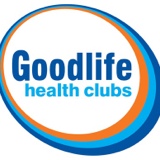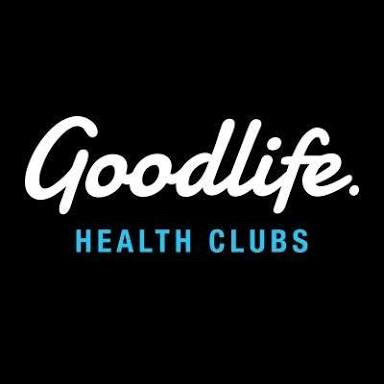Information
-
Document No.
-
Audit Title
-
Client / Site
-
Conducted on
-
Location
-
Personnel
-
Prepared by
-
Auditor Signature
1. Essential Services / Emergency Procedures
1. ESSENTIAL SERVICES/EMERGENCY PROCEDURES
-
THERE IS A PROGRAMMED PREVENTATIVE MAINTENANCE SCHEDULE FOR ALL FIRE SAFETY MEASURES IN THE CLUB<br>Fire extinguishers serviced 6 monthly<br>Emergency exit signs and lights serviced<br>Sprinkler system/alarm system<br>Fire doors
-
Extinguishers in place and clearly marked
-
Exit signage visible and clearly illuminated
-
Employees can explain:<br>- fire evacuation procedure<br>- bomb threat procedure<br>- robbery/armed hold up
-
CGM can explain:<br>- role of ECO/CFW<br>- fire system/alarm system Evac procedure<br>- service schedule essential services/record keeping<br>
-
Pathways to exits clear and unobstructed
-
Exit doors open easily
-
Staff trained in the use of fire extinguishers, hose reels and emergency procedures signed off
-
Emergency floor plans displayed and attached securely - showing egress routes
-
Fire drills practiced yearly - evacuation report on site
-
Current emergency procedures - reviewed within last 12 months and site specific
-
Annual fire certification (from service provider)
-
Copy of occupiers statement/building classification - QLD building classification / essential services VIC
2. Incident / Hazard Reporting
2. INCIDENT & HAZARD REPORTING
-
Incident forms completed correctly and loaded into Figtree within 5 days and reviewed
-
There is a mechanism in place for reporting notifiable incidents to the appropriate regulatory body within specified time frames (senior management) CGM is aware of procedure
-
Hazard alert forms - appropriate process for each hazard followed & entered into maintenance log and Figtree (assessed, reviewed and controls in place)
-
Employee group (random selection) knowledge on incident and hazard reporting (ask receptionist and MC on shift)
-
Employees understand responsibility for managing and controlling hazards (ask receptionist and MC in shift)
-
There is a process for rehabilitation and case management of injured workers (RTW programme) CGM is aware of location of procedure and process to follow
-
A RTW coordinator has been appointed and staff are aware of their identity (ask CGM)
3. Management System
3. MANAGEMENT SYSTEM
-
The organization has OHS plans in order to meet OHS targets. CGM aware of location of plan and understanding of objectives and plan
-
An OHS policy has been developed and signed by senior management with OHS policy posted in workplace
-
Responsibility & accountability for OHS has been clearly defined throughout the organization and all communicated responsibilities (induction sign off)
-
Mechanisms of consultation and communication have been documented and communicated to employees (induction forms, question receptionist on shift)
-
Evidence of consultation available - HSR or minutes quarterly OHS meeting Action current in Figtree with minutes attached
-
A procedure has been developed and implemented outlining the companies method of hazard identification and timely reporting of information. CGM to have knowledge of procedure and location of procedure
-
OHS records are maintained on site and relevant personnel can locate these easily
-
A records retention table is set up and records are retained as set out in the table. CGM to know where to source information
-
Workplace inspections are undertaken on a weekly basis (CGM Inspections) actions identified & completed in a timely manner
-
Monthly equipment inspections - logged into maintenance
-
Risk management - training yearly. Sign off required with staff listing as roll cal
-
Induction given to all new starters, evidenced by signed induction list
-
CGM has knowledge of: <br><br>CGM KPIs from job description <br>Responsibilities as listed in OHS manual<br>All OHS procedures (reference to OHS manual)
-
Staff file current - records of CPR, first aid, Cert IV Fitness Australia - loaded into Figtree
-
Relevant permits current, displayed Fitness Australia, Entertainment venue, liquor license
-
Manual handling tasks formally identified
-
Preventative and manual handling instruction with staff listing as roll call
-
Action items completed from previous audits
-
Risk assessments completed (original in house)<br><br>- opening / closing<br>- torsonator<br>- changing pool chemicals
-
Written procedures for key duties (where applicable)<br><br>- opening/closing procedures<br>- changing pool chemicals
4. Chemicals
4. CHEMICALS
-
Correctly labelled spray bottles
-
Current (no older than 5 years) SDS available for all HS/DGs stored on the premises in chemical storage area
-
A central hazardous substances and dangerous goods register is maintained on site - reviewed annually
-
Chemical room clean and tidy
-
Risk assessments and SWMS for all hazardous chemicals on site
-
Chemicals bunded/segregated, incompatible chemicals are appropriately segregated
-
Person handling chemicals have received appropriate induction, training and information (records to be maintained)
-
PPE available
-
SWMS for staff cleaners & staff who assist with pool cleaning and the use of associated chemicals
5. Plant & Equipment
5. PLANT & EQUIPMENT
-
Plant & equipment clean & upholstery in good condition
-
Emergency stop buttons tested and recorded
-
Maintenance request log folder - in use and maintained
-
Maintenance plan - monitored and matches service records
-
Plant & equipment register - check new equipment added
-
Plant and equipment maintenance records folder - records are maintained of plant and electrical equipment maintenance
-
Plant and equipment risk assessments:<br><br>- risk assessments have been completed for each item of plant<br>- risk controls in relation to items of plant have been identified and implemented <br>- reviewed annually
-
There is a procedure for isolation & tag out of unsafe equipment and procedure communicated to employees
6. Electrical
6. ELECTRICAL
-
Plugs/cables & sockets in good condition and tidy - don't pose trip hazard
-
Test and tag completed annually
-
Electrical register current
-
RCD tested annually - electrician to test and record
-
Process in place to ensure that all electrical equipment is appropriately tested & tagged - 6 monthly redundant in house electrical inspection
7. Contractor
7. CONTRACTOR
-
- all contractors sign in and out of club<br>- approved contractor list available for reference
-
Contractor OHS induction
-
Yearly checks on routine contractors<br>- Each time for any high risk tasks<br>- Contractor OHS performance is monitored and unsatisfactory performance if followed up<br>- Work permit<br>
-
Visitor badges
-
All contractors provide site specific JSA/SWMS and risk assessments for proposed works prior to commencement of work
8. First Aid
8. FIRST AID
-
A first aid and injury register is maintained
-
Procedures have been developed and implemented regarding infection control with staff training procedures
-
There is a system in place to ensure that first aid kits are appropriately maintained<br><br>- monthly first aid kit checks / weekly de fib
-
Comprehensive emergency numbers listed adjacent to all phones
9. Sauna/Pool/Steamroom/Spa
9. SAUNA, POOL, STEAM ROOM, SPA
-
Safety signs in place:<br><br>- depth signage clearly visible<br>- no supervision / no life guard signs<br>- pool safety general precautions sign<br>- CPR, current version (DRABCD)<br>- relaxation zone health and safety signs
-
Pool procedure manual, yearly training for reception - sign off available
-
Pool/spa water tests as per regulations<br>Low usage 2 x daily<br>Medium usage 3 x daily<br>High usage 4 x daily<br>
-
Pool surrounds, pool plant room clean and tidy
-
Pool rescue device available
-
Chemical spill kit in pool plant room
-
Slip hazards managed on pool deck
10. General Areas
10. GENERAL AREAS
-
Floors within common areas are free from protrusions and are unobstructed
-
Good general lighting with all working
-
Procedure for cleaning up spill kits - wet floor signs/spill kits <br>Areas that are wet/slippery are signposted
-
Trip hazards associated with steps/stairs are controlled (e.g treads are highlighted)
-
Hand rails have been installed at stairs/steps
-
Housekeeping is adequate within public areas
-
Store rooms clean and tidy
-
Air con service/fitters clean with ventilation systems adequately maintaining levels of temperature and sufficient fresh air is introduced to the indoor atmosphere
-
Employees required to work outdoors have implemented procedures to reduce UV exposure and minimize heat stress
-
Bathroom facilities:<br><br>- clean and tidy<br>- hair dryers/straighteners, leads in good condition, new and tidy with holders in place and filters clean<br>- slip/trip hazards controlled
-
Work stations / staff areas <br><br>- appropriately set up and clear<br>- no clutter under desks<br>- electrical cords neat and tidy
-
Cleanliness / Trip hazards<br><br>- gym floor<br>- group fitness<br>- cardio areas<br>- general areas<br>
-
Safety signs on equipment<br><br>- cable cross over/omni kinetic<br>- seated leg curl, caution pinch signs<br>- all pin and plate loaded weights<br>- treadmills
-
Approved "No responsibility theft" signs in bathrooms
-
Condition of entry signs at entrance
11. Working at Heights/Registered Plant
11. WORKING AT HEIGHTS AND REGISTERED PLANT
-
All tasks that could result in a fall from greater than 1.8 metres have been identified - CGM should have form available from maintenance
-
Safe access has been provided to the roof areas
-
If anchor points have been installed, there is a procedure no place to ensure tested every 12 months
-
Risk assessments / SWMS have been completed for all tasks involving working at heights CGM should hold a copy of maintenance SWMS to monitor
-
Lift registered and quarterly service programme implemented
12. Hazardous Materials
12. HAZARDOUS MATERIALS
-
A hazardous materials survey has been conducted (including the identification of asbestos) Buildings pre 2004 and an asbestos register is available
-
Asbestos risk management controls are implemented and regularly inspected. The effectiveness of these controls is reviewed and revised every year
-
An asbestos risk management plan has been developed<br><br>- asbestos materials labelled as such<br>- contractor sign in sheet makes mention of asbestos<br>- register is held in front of contractor folder for viewing
13.Child Care
13. CHILD CARE
-
Registration forms for children completed on first attendance
-
Parent signs child in and out on attendance sheet
-
Documented procedures available for child care with staff training delivered yearly (procedures current)
-
Staff qualifications current and on site<br><br>- blue card/working with children checks<br>- first aid/CPR<br>- Vic : Anaphylaxis management 3 yearly
-
Cleaning schedule in place for toys/tables (sign off daily) <br>Cleanliness of area/receptions/bathrooms
-
Required signage:<br><br>- time out policy<br>- govt crèche sign - QLD, SA, WA, NSW<br>- Anaphylaxis plans<br>- child care license - VIC
14. Car Park / Outdoor Areas
14. CAR PARK / OUTDOOR AREAS
-
Car park - area clean and tidy with no rubbish and no pot holes
-
Speed/collision controls in place <br>Speed signs/speed bumps
-
Line spacing clearly marked / collision points identified and highlighted
-
No responsibility for lost / stolen / theft signage
-
Gardens are maintained
-
Good external lighting - no issues identified
















